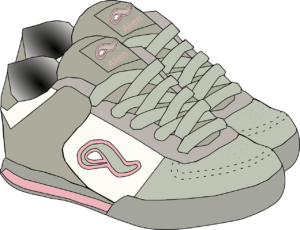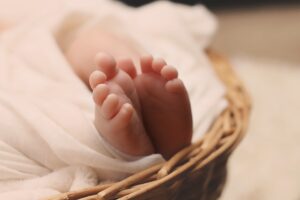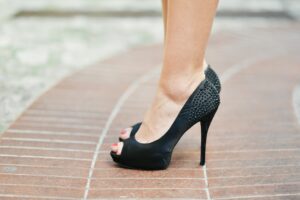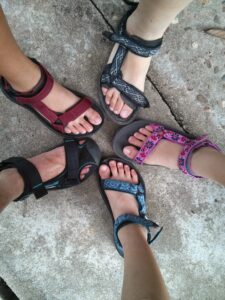Article contributed by Ms Emily Mah
 For every pregnancy journey, a mother or mother-to-be naturally experiences feelings of excitement and apprehension. In this 40-week period, a woman’s body goes through so many phases of change. Visible changes of increasing waistline and digits on the weighing scale are often coupled with swelling in the ankles and the presence of stretch marks. Internal observations will show pregnancy’s effects on metabolism, respiration, bone density, and the digestive system, to name a few.
For every pregnancy journey, a mother or mother-to-be naturally experiences feelings of excitement and apprehension. In this 40-week period, a woman’s body goes through so many phases of change. Visible changes of increasing waistline and digits on the weighing scale are often coupled with swelling in the ankles and the presence of stretch marks. Internal observations will show pregnancy’s effects on metabolism, respiration, bone density, and the digestive system, to name a few.
As the body accommodates a nurturing and developing fetus, stark changes in the anatomy and physiology of a woman will occur. Throughout the course of these 9 months, such changes actually have an impact on every organ system in the body.
 In this article, we will cover how pregnancy affects the feet. Swelling is a common occurrence during this phase. Also known as oedema, swelling can occur in different parts of the body though it largely occurs in the ankle region. Puffiness in the face or the hands is occasionally present. Dark spider veins, also known as varicose veins, often cause aesthetic concerns in women. Pregnancy is presumed to be a major contributing factor in its increased prevalence. Aside from its undesirable sight, this can also lead to cramps, heaviness, aching or numbness in the feet and calves.
In this article, we will cover how pregnancy affects the feet. Swelling is a common occurrence during this phase. Also known as oedema, swelling can occur in different parts of the body though it largely occurs in the ankle region. Puffiness in the face or the hands is occasionally present. Dark spider veins, also known as varicose veins, often cause aesthetic concerns in women. Pregnancy is presumed to be a major contributing factor in its increased prevalence. Aside from its undesirable sight, this can also lead to cramps, heaviness, aching or numbness in the feet and calves.
 As the stages of pregnancy progress, a woman’s foot changes in length, width, and volume. This occurs when the hormone called relaxine is released seven to tenfold, causing ligamentous laxity. As a result, the arch in the foot loses or lowers its height, and pronation is increased. Pronation refers to the inward movement of the foot as you walk or run. Your foot normally rolls a bit inward with each step. A skew in the foot’s alignment starts, causing a knock-on misalignment effect to the feet, knees, hips, and back.
As the stages of pregnancy progress, a woman’s foot changes in length, width, and volume. This occurs when the hormone called relaxine is released seven to tenfold, causing ligamentous laxity. As a result, the arch in the foot loses or lowers its height, and pronation is increased. Pronation refers to the inward movement of the foot as you walk or run. Your foot normally rolls a bit inward with each step. A skew in the foot’s alignment starts, causing a knock-on misalignment effect to the feet, knees, hips, and back.
Weight gain during this period is also taken into account, which contributes to more strain on the already abnormally lax ligaments. With a more prominent baby bump, the risk of falls increases as well as the prevalence of joint pain in women. This is related to the biomechanical and anatomical changes during this period. In attempts to increase stability and reduce the loss of balance, a decreased step-length and wider step-width are observed. A woman will adopt a “penguin” gait or unconsciously “waddle” which changes the position of the knees and the pelvis. This alteration in gait is seen up to six weeks post-pregnancy.
In Malaysia, most overlook the importance of supportive footwear. During pregnancy, the right shoes play a crucial role in the prevention of lower limb pain and pathologies. When carrying out any weight-bearing activities (indoors and outdoors) ensure the feet have adequate support.
- Firm base – the sole of shoes when worn, functions as the foundation of the entire body. Ensure that a solid base is present, instead of a soft and malleable base.
- Adjustable fastening – as swelling in the foot and ankle can occur, ensure to avoid slip-on style footwear. Instead, opt for footwear with adjustable straps and laces. Ensure to adjust it when the feet expand in size.
- Suitable size – when the arch of the foot lowers during pregnancy, the foot length increases. It is common to experience changes in shoe size. The changes can range from half a size to a size up. While many mothers do account for the changes in foot length (as measured by the footwear size), they often neglect the increase in width. Take note of footwear with wider cuts for the toes areas. Some women with a wider forefoot will need a pair of shoes with the appropriate width for better foot health.
As the risk of falls is increased with an enlarged tummy, high heels should generally be avoided. Flip flops provide a lack of support for the joints and should not be worn.
Avoid leather-type materials as they do not expand well and can cause excessive friction against the skin. Typically, a pair of sports shoes or sneakers are the healthiest option for the feet. Certain sandal-style options can also be considered.
Preserving the joints of the feet, knees, hips, and back are important in a smoother pregnancy experience. Prevention of problems as listed above in pregnancy’s early stages is important for a healthy mother and baby.  You may want to consider wearing appropriate sandals even indoors to provide adequate support for your ankles and reduce strain on the feet. Other simple preventative measures include compression stockings, custom orthotics, and specific exercises to be carried out throughout this journey.
You may want to consider wearing appropriate sandals even indoors to provide adequate support for your ankles and reduce strain on the feet. Other simple preventative measures include compression stockings, custom orthotics, and specific exercises to be carried out throughout this journey.
To print a pdf copy of this article, click HERE
Article contributed by
Ms Emily Mah
Clinical Podiatrist
Subang Jaya Medical Centre
Please subscribe below to receive the regular newsletter.
[mailerlite_form form_id=3]




